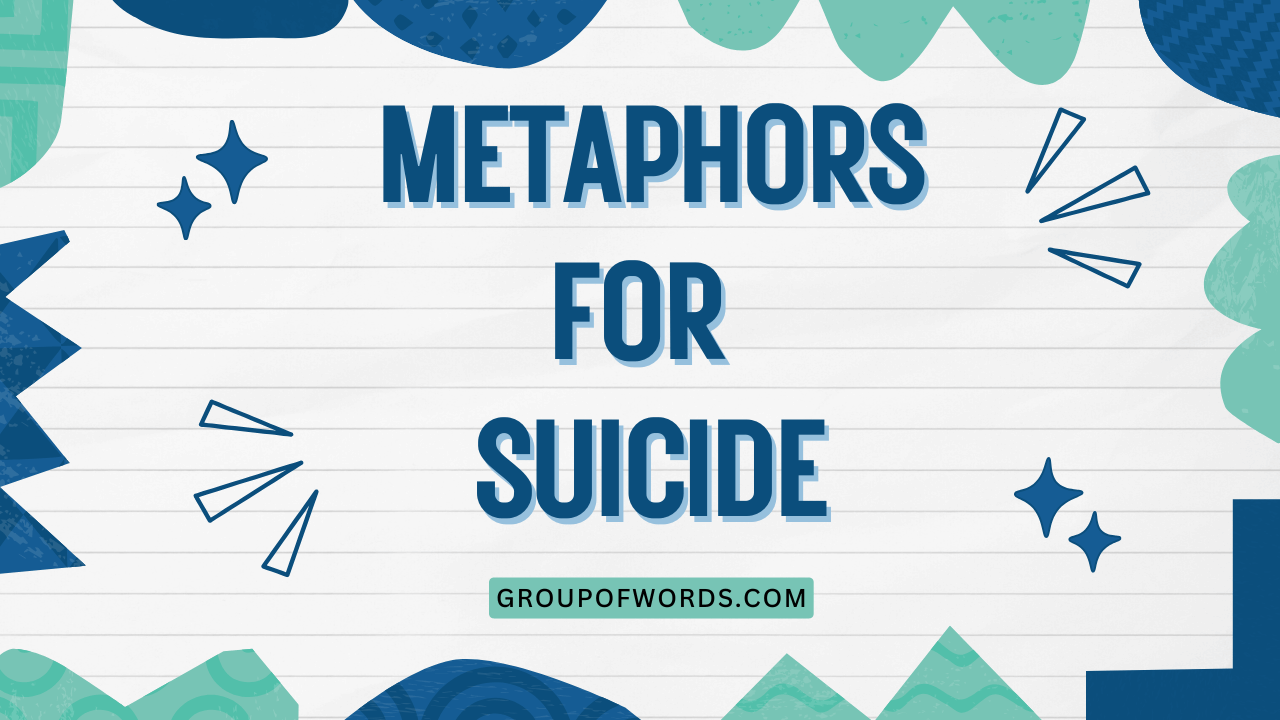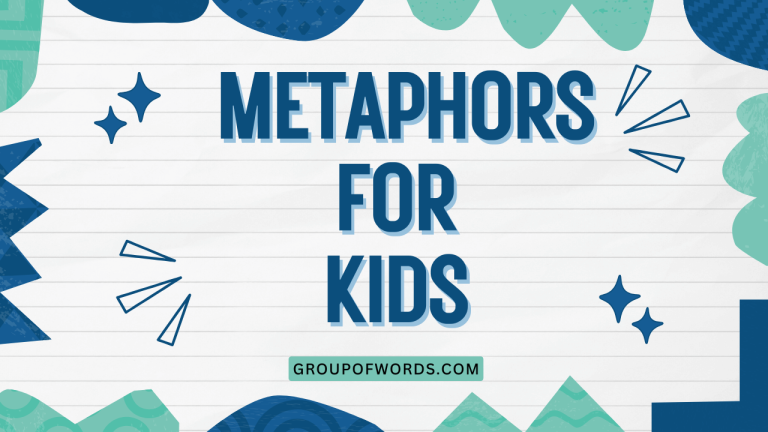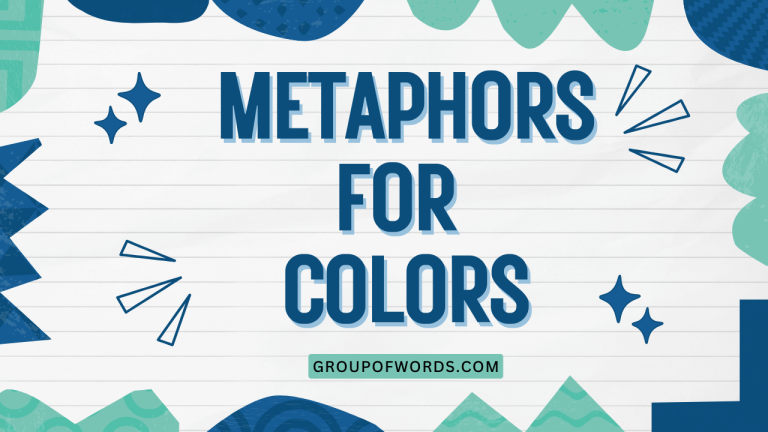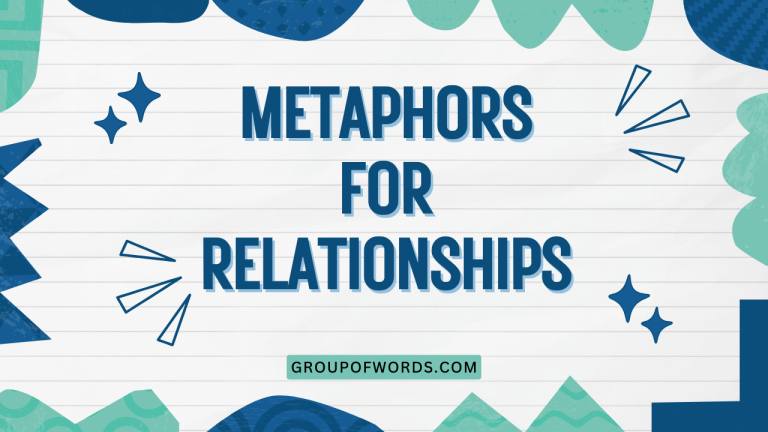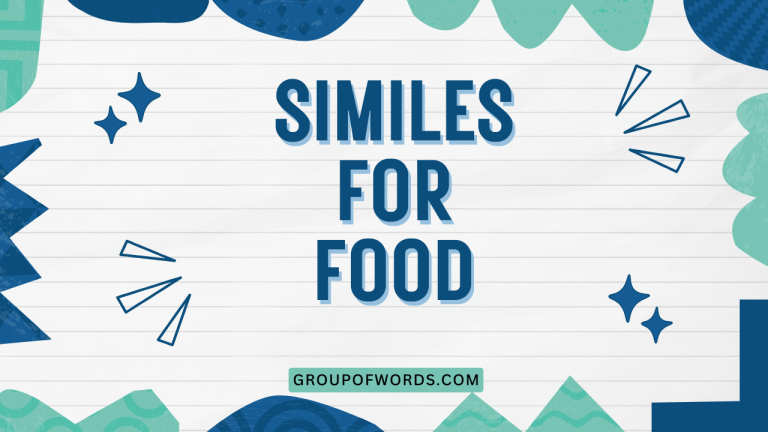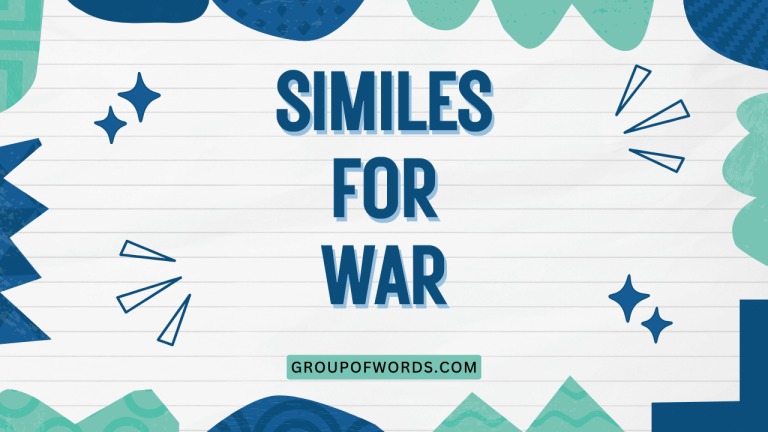Speaking of Despair: Understanding Metaphors for Suicide
Metaphors are powerful tools in language, allowing us to understand complex concepts by relating them to more familiar ones. When dealing with sensitive topics like suicide, metaphors can be particularly impactful, shaping how we perceive and discuss mental health and despair.
Understanding these metaphors is crucial for fostering empathy, improving communication, and ultimately, preventing suicide. This article will delve into the various metaphors used to describe suicide, exploring their meanings, implications, and appropriate usage.
This guide is designed for students, educators, mental health professionals, and anyone interested in developing a more nuanced understanding of language and its impact on mental health discourse.
By exploring the nuances of these metaphors, we can become more attuned to the subtle cries for help that may be embedded within everyday language. This understanding will enable us to approach conversations about suicide with greater sensitivity and awareness, fostering a supportive environment for those who may be struggling.
Table of Contents
- Introduction
- Defining Suicide Metaphors
- Structural Breakdown of Suicide Metaphors
- Types and Categories of Suicide Metaphors
- Examples of Suicide Metaphors
- Usage Rules and Considerations
- Common Mistakes to Avoid
- Practice Exercises
- Advanced Topics
- Frequently Asked Questions
- Conclusion
Defining Suicide Metaphors
A metaphor is a figure of speech in which a word or phrase is applied to an object or action to which it is not literally applicable. It’s a comparison that doesn’t use “like” or “as,” but rather suggests a likeness or analogy between two seemingly unrelated things.
In the context of suicide, metaphors are used to describe the act, the feelings leading up to it, and the aftermath, often in indirect and symbolic ways.
Metaphors related to suicide often serve as a coping mechanism, allowing individuals to express their feelings of hopelessness, despair, and pain without directly stating their suicidal intentions. They can also be used by others to describe and understand the complex and often incomprehensible nature of suicide.
The function of suicide metaphors extends beyond mere description. They shape our understanding of the act, influencing our perceptions and responses.
By framing suicide as a “battle,” for example, we might emphasize the struggle and internal conflict experienced by the individual. Alternatively, framing it as an “escape” might highlight the perceived relief or end to suffering.
The context in which a metaphor is used is crucial. The same metaphor can have different connotations depending on the speaker, the audience, and the overall situation.
For instance, the metaphor of “falling into darkness” might be used by someone contemplating suicide to describe their descent into depression, or by someone grieving a loss to describe their feelings of sadness and despair.
Structural Breakdown of Suicide Metaphors
Understanding the structure of suicide metaphors involves recognizing the two key components: the tenor and the vehicle. The tenor is the subject being described (in this case, suicide or suicidal feelings), and the vehicle is the object or concept used to represent it.
The relationship between the tenor and the vehicle is based on shared characteristics or associations. For example, in the metaphor “drowning in despair,” the tenor is the feeling of despair, and the vehicle is drowning.
The shared characteristic is the overwhelming and suffocating nature of both experiences.
The effectiveness of a suicide metaphor lies in its ability to evoke a specific emotional response or understanding. A well-chosen metaphor can convey the intensity and complexity of suicidal thoughts and feelings in a way that literal language often cannot.
The structure of the metaphor helps to create this connection between the abstract concept of suicide and more tangible, relatable experiences.
Metaphors, unlike similes, do not use explicit comparison words like “like” or “as.” Instead, they assert that one thing *is* another, creating a more direct and powerful connection. Understanding this structural difference is crucial for identifying and interpreting metaphors in discussions about suicide.
Types and Categories of Suicide Metaphors
Suicide metaphors can be broadly categorized based on the themes and concepts they employ. Recognizing these categories can help us better understand the different ways in which suicide is conceptualized and discussed.
Journey Metaphors
Journey metaphors portray suicide as the end of a path or a destination. They often involve imagery of travel, such as roads, paths, and destinations.
Examples include: “reaching the end of the road,” “taking the final step,” “going on a one-way trip,” and “crossing the point of no return.” These metaphors emphasize the idea of suicide as a final and irreversible act, often suggesting a sense of inevitability.
Battle Metaphors
Battle metaphors depict suicide as a struggle or a fight against internal demons or external forces. They often involve imagery of war, weapons, and enemies.
Examples include: “losing the battle,” “fighting a losing war,” “succumbing to the enemy within,” and “being defeated by depression.” These metaphors highlight the intense internal conflict and the overwhelming sense of defeat that can precede suicide.
Escape Metaphors
Escape metaphors portray suicide as a way to escape from pain, suffering, or difficult circumstances. They often involve imagery of freedom, release, and liberation.
Examples include: “finding a way out,” “breaking free,” “escaping the pain,” and “seeking release.” These metaphors emphasize the perceived relief or end to suffering that suicide is believed to offer.
Burden Metaphors
Burden metaphors describe the weight of emotional pain and suffering as a heavy load. They often involve imagery of carrying weight, being weighed down, or collapsing under pressure.
Examples include: “carrying the weight of the world,” “being crushed by despair,” “burdened by sadness,” and “unable to bear the pain any longer.” These metaphors highlight the overwhelming sense of responsibility and the unbearable emotional strain that can contribute to suicidal thoughts.
Darkness Metaphors
Darkness metaphors use imagery of darkness, shadows, and night to represent depression, hopelessness, and despair. They often evoke feelings of isolation, fear, and uncertainty.
Examples include: “falling into darkness,” “lost in the shadows,” “engulfed by the night,” and “living in a dark place.” These metaphors emphasize the overwhelming sense of gloom and the absence of hope that can characterize suicidal ideation.
Silence Metaphors
Silence metaphors use imagery of silence, muteness, and voicelessness to represent the inability or unwillingness to express suicidal thoughts and feelings. They often highlight the isolation and loneliness experienced by individuals contemplating suicide.
Examples include: “suffering in silence,” “unable to speak out,” “a silent scream,” and “voiceless despair.” These metaphors emphasize the importance of breaking the silence and encouraging open communication about mental health.
Examples of Suicide Metaphors
The following tables provide a comprehensive list of examples of suicide metaphors, categorized by type. Each example illustrates how these metaphors are used to express and understand the complexities of suicide.
Journey Metaphors Examples
This table illustrates how the concept of a journey is used metaphorically to represent the path towards suicide. These metaphors often imply a sense of finality and inevitability.
| Metaphor | Explanation |
|---|---|
| Reaching the end of the road | Implies that there are no more options or possibilities left. |
| Taking the final step | Suggests a decisive and irreversible action. |
| Going on a one-way trip | Highlights the finality and lack of return. |
| Crossing the point of no return | Emphasizes the irreversible nature of the decision. |
| Embarking on a dark voyage | Portrays suicide as a journey into the unknown and frightening. |
| The last mile | Suggests the final, difficult stretch before the end. |
| Stepping off the edge | Imagery of a dangerous and irreversible leap. |
| Following a path to nowhere | Implies a sense of hopelessness and lack of direction. |
| The final destination | Euphemistic way of referring to death as the ultimate goal. |
| Checking out | Common metaphor suggesting a departure or ending. |
| Going to a better place | Suggests a desire for peace and relief from suffering. |
| Leaving this world behind | Emphasizes the act of separation and departure. |
| Sailing into the sunset | Romanticized view of death as a peaceful journey. |
| The final curtain call | Metaphor from theater, indicating the end of a performance/life. |
| Closing the book | Suggests the end of a story or chapter in life. |
| Turning the page for the last time | Similar to closing the book, emphasizing finality. |
| Winding down the clock | Implies a gradual and inevitable ending. |
| The last train | Suggests missing opportunities and reaching a final point. |
| The ultimate exit | Emphasizes suicide as a way out of a difficult situation. |
| Reaching the abyss | Portrays suicide as falling into a deep, dark void. |
| Going home | Suggests a return to a place of peace and belonging. |
| The final frontier | Borrowing from space exploration, implying the unknown after death. |
| The end of the line | Indicates the termination of a journey or process. |
Battle Metaphors Examples
This table presents examples of battle metaphors, highlighting the internal struggle and sense of defeat often associated with suicidal ideation. These metaphors emphasize the perceived power of negative emotions and the feeling of being overwhelmed.
| Metaphor | Explanation |
|---|---|
| Losing the battle | Suggests defeat in a struggle against internal forces. |
| Fighting a losing war | Emphasizes the futility and hopelessness of the struggle. |
| Succumbing to the enemy within | Identifies internal struggles as the primary opponent. |
| Being defeated by depression | Personifies depression as a powerful and destructive force. |
| Wrestling with demons | Implies a difficult and ongoing internal conflict. |
| Under attack | Suggests feeling overwhelmed and vulnerable. |
| A war within | Highlights the internal conflict and turmoil. |
| Giving up the fight | Indicates a loss of hope and willingness to continue struggling. |
| Surrendering to the darkness | Implies acceptance of negative emotions and hopelessness. |
| The final blow | Suggests a decisive event that leads to suicide. |
| Being at war with oneself | Emphasizes self-loathing and internal conflict. |
| Fighting a silent war | Highlights the hidden and unspoken nature of the struggle. |
| The enemy is winning | Suggests that negative emotions are gaining control. |
| Losing ground | Implies a weakening of resolve and increasing vulnerability. |
| The ultimate sacrifice | Suggests suicide as a desperate act of selflessness. |
| A battle against the odds | Emphasizes the difficulty and unlikelihood of success. |
| The final stand | Implies a last desperate attempt to resist suicidal urges. |
| Being bombarded by thoughts | Suggests being overwhelmed by intrusive and negative thoughts. |
| The war is over | Indicates a final and irreversible end to the struggle. |
| Defeated and broken | Highlights the emotional and psychological damage. |
| Internal warfare | A more clinical term for intense internal conflict. |
| Fighting fire with fire | Using destructive means to combat pain. |
| Wounded spirit | Suggests deep emotional and psychological damage. |
| Taking friendly fire | Self-inflicted harm or negative self-talk. |
Escape Metaphors Examples
This table provides examples of escape metaphors, which portray suicide as a means of escaping unbearable pain or suffering. These metaphors often emphasize the desire for relief and the perceived freedom from torment.
| Metaphor | Explanation |
|---|---|
| Finding a way out | Suggests a desire to escape from difficult circumstances. |
| Breaking free | Emphasizes the act of liberation from pain and suffering. |
| Escaping the pain | Highlights the primary motivation for suicide as relief from suffering. |
| Seeking release | Suggests a desire for freedom from emotional or psychological distress. |
| A final exit | Emphasizes suicide as a way to leave behind problems. |
| Freedom from suffering | Highlights the perceived benefit of suicide as an end to pain. |
| A way to disappear | Suggests a desire to escape notice or attention. |
| The ultimate escape | Emphasizes suicide as the most extreme form of escape. |
| Leaving it all behind | Suggests a desire to abandon responsibilities and burdens. |
| A clean slate | Implies a desire to start over without past problems. |
| Breaking the chains | Emphasizes liberation from oppressive circumstances. |
| Finding peace at last | Suggests a desire for tranquility and an end to turmoil. |
| A graceful exit | Romanticized view of suicide as a dignified departure. |
| Flying away | Implies a sense of freedom and escape from earthly troubles. |
| The only way out | Emphasizes the perceived lack of alternatives. |
| A final act of defiance | Suggests suicide as a way to assert control over one’s life. |
| Leaving the stage | Metaphor from theater, indicating a departure from life’s drama. |
| A silent departure | Highlights the quiet and unnoticed nature of the escape. |
| Vanishing into thin air | Implies a complete and sudden disappearance. |
| Breaking free from the cage | Emphasizes liberation from restrictive circumstances. |
| Out of reach | Escaping problems and people that cause pain. |
| A great escape | Relating to the movie, emphasizes a daring and desperate act. |
| Going off the grid | Disconnecting from society and its pressures. |
Burden Metaphors Examples
This table presents examples of burden metaphors, which describe the weight of emotional pain and suffering as a heavy load. These metaphors highlight the overwhelming sense of responsibility and the unbearable emotional strain that can contribute to suicidal thoughts.
| Metaphor | Explanation |
|---|---|
| Carrying the weight of the world | Suggests an overwhelming sense of responsibility and burden. |
| Being crushed by despair | Emphasizes the overwhelming and oppressive nature of despair. |
| Burdened by sadness | Highlights the heavy emotional weight of sadness and grief. |
| Unable to bear the pain any longer | Suggests that the emotional pain has become unbearable. |
| Weighed down by sorrow | Implies a constant and oppressive feeling of sadness. |
| A heavy heart | Suggests deep sadness and emotional pain. |
| The straw that broke the camel’s back | Emphasizes the final event that leads to a breakdown. |
| Carrying a cross | Suggests enduring suffering and hardship. |
| Sinking under the pressure | Implies being overwhelmed by stress and demands. |
| Drowning in sorrow | Emphasizes the overwhelming and suffocating nature of grief. |
| The burden of existence | Suggests that life itself has become a heavy load. |
| Trapped under the weight | Implies being unable to move forward due to emotional burdens. |
| Crushed spirits | Highlights the emotional and psychological damage. |
| A ton of bricks | Suggests being hit hard by a sudden and overwhelming burden. |
| The weight of expectations | Emphasizes the pressure to meet others’ demands. |
| A heavy price to pay | Suggests that the cost of living has become too high. |
| Collapsing under the strain | Implies a breakdown due to excessive pressure. |
| The world on their shoulders | Suggests an immense sense of responsibility and burden. |
| Bowed down by grief | Emphasizes the physical and emotional impact of grief. |
| Overwhelmed by responsibility | Highlights the pressure of managing numerous obligations. |
| Saddled with problems | Suggests being burdened by numerous difficulties. |
| Dragging oneself through life | Implies a lack of energy and motivation due to burdens. |
Darkness Metaphors Examples
This table provides examples of darkness metaphors, which use imagery of darkness, shadows, and night to represent depression, hopelessness, and despair. These metaphors often evoke feelings of isolation, fear, and uncertainty.
| Metaphor | Explanation |
|---|---|
| Falling into darkness | Suggests a descent into depression and despair. |
| Lost in the shadows | Emphasizes feelings of isolation and uncertainty. |
| Engulfed by the night | Highlights the overwhelming and oppressive nature of despair. |
| Living in a dark place | Suggests a prolonged state of depression and hopelessness. |
| A dark cloud hanging over | Implies a persistent feeling of gloom and negativity. |
| Shadows of despair | Suggests lingering feelings of hopelessness and sadness. |
| The darkness within | Emphasizes internal struggles and negative emotions. |
| A world of darkness | Suggests a complete absence of hope and light. |
| Lost in the abyss | Implies being overwhelmed by feelings of despair and emptiness. |
| The long dark night | Suggests a prolonged period of suffering and despair. |
| A lightless existence | Emphasizes the absence of joy and hope in life. |
| Consumed by shadows | Implies being overwhelmed by negative emotions and thoughts. |
| Darkness closing in | Suggests an increasing sense of hopelessness and despair. |
| A darkened soul | Highlights the emotional and psychological damage. |
| Lost in the twilight zone | Suggests a state of confusion and disorientation. |
| The black dog | A metaphor for depression, implying a constant companion of sadness. |
| Living in perpetual night | Emphasizes a continuous state of darkness and despair. |
| A shadowed life | Suggests a life marked by sadness and hardship. |
| Lost in the darkness of the mind | Implies being overwhelmed by negative thoughts and emotions. |
| The dark side | Suggests a hidden and negative aspect of personality. |
| Pitch black | Complete and overwhelming darkness. |
| Staring into the void | Facing nothingness and despair. |
| A black hole of despair | An all-consuming and inescapable darkness. |
Usage Rules and Considerations
While metaphors can be powerful tools for expressing complex emotions, it’s crucial to use them responsibly when discussing suicide. Here are some key rules and considerations:
- Be Mindful of the Audience: Consider the emotional state and background of your audience. Some metaphors may be triggering or insensitive to individuals who have experienced suicidal thoughts or loss.
- Avoid Glorifying Suicide: Steer clear of metaphors that romanticize or glorify suicide, as this can be harmful and contribute to contagion.
- Use Empathetic Language: Choose metaphors that convey empathy and understanding, rather than judgment or blame.
- Provide Context: Ensure that the meaning of your metaphor is clear and unambiguous, especially when discussing sensitive topics.
- Balance Metaphors with Direct Language: While metaphors can be helpful for expressing emotions, it’s important to also use direct language when discussing suicide prevention and seeking help.
- Respect Individual Preferences: Be sensitive to individual preferences regarding the use of metaphors. Some people may find them helpful, while others may prefer more direct language.
- Be Aware of Cultural Differences: Metaphors can have different meanings and connotations in different cultures. Be mindful of these differences to avoid misinterpretations.
It’s important to remember that language has the power to shape our perceptions and attitudes. By using metaphors thoughtfully and responsibly, we can contribute to a more compassionate and understanding dialogue about suicide.
Common Mistakes to Avoid
Using metaphors incorrectly or insensitively can have unintended consequences, especially when discussing sensitive topics like suicide. Here are some common mistakes to avoid:
| Mistake | Correct Usage | Explanation |
|---|---|---|
| Romanticizing suicide (e.g., “a peaceful escape”) | “Seeking release from unbearable pain” | Avoid portraying suicide as desirable or positive. Focus on the underlying suffering. |
| Using violent metaphors that normalize suicide (e.g., “pulling the trigger”) | “Reaching a point of no return” | Avoid imagery that glorifies violence or makes suicide seem like a simple solution. |
| Using overly abstract metaphors that are difficult to understand (e.g., “entering the quantum realm”) | “Falling into a deep abyss” | Choose metaphors that are relatable and easy to interpret. |
| Using metaphors that blame the individual (e.g., “losing the game”) | “Being overwhelmed by the battle” | Avoid language that suggests personal failure or weakness. Emphasize the overwhelming nature of the struggle. |
| Using metaphors without providing context or explanation | “They felt like they were drowning in despair, unable to breathe or find a way out.” | Ensure that the meaning of your metaphor is clear and that it accurately reflects the individual’s experience. |
| Using metaphors that minimize the seriousness of suicide (e.g., “just checking out”) | “Seeking a final escape from unbearable pain” | Avoid language that trivializes or downplays the severity of suicidal ideation. |
| Using metaphors that perpetuate stigma (e.g., “giving in to madness”) | “Succumbing to overwhelming despair” | Avoid language that reinforces negative stereotypes or prejudices about mental illness. |
By being aware of these common mistakes and striving to use metaphors responsibly, we can contribute to a more supportive and understanding dialogue about suicide prevention.
Practice Exercises
Test your understanding of suicide metaphors with these practice exercises. Identify the type of metaphor used in each sentence and explain its meaning.
Exercise 1: Identifying Metaphor Types
| Question | Answer |
|---|---|
| 1. He felt like he was carrying the weight of the world on his shoulders. | Burden Metaphor: Suggests an overwhelming sense of responsibility and burden. |
| 2. She described her depression as falling into a deep, dark abyss. | Darkness Metaphor: Emphasizes the overwhelming and hopeless nature of depression. |
| 3. He felt like he was fighting a losing battle against his inner demons. | Battle Metaphor: Highlights the internal struggle and sense of defeat. |
| 4. She saw suicide as the only way to escape the pain. | Escape Metaphor: Portrays suicide as a means of finding relief from suffering. |
| 5. He felt like he had reached the end of the road, with no other options left. | Journey Metaphor: Suggests a sense of finality and inevitability. |
| 6. Her silent scream went unheard. | Silence Metaphor: Highlights the inability to express pain. |
| 7. Depression had him trapped under its heavy thumb. | Burden Metaphor: Emphasizes the oppressive nature of depression. |
| 8. He surrendered to the darkness. | Darkness Metaphor: Implies acceptance of hopelessness. |
| 9. She was waging a war within herself. | Battle Metaphor: Highlights internal conflict. |
| 10. He was seeking a final exit from his suffering. | Escape Metaphor: Emphasizes the desire for relief. |
Exercise 2: Interpreting Metaphorical Meaning
| Question | Answer |
|---|---|
| 1. What does it mean when someone says they are “drowning in despair”? | It means they are feeling overwhelmed and suffocated by feelings of hopelessness and sadness. |
| 2. What does it mean when someone says they feel like they are “lost in the shadows”? | It means they are feeling isolated, uncertain, and unable to find their way out of their current situation. |
| 3. What does it mean when someone says they feel like they are “carrying a cross”? | It means they are enduring a great deal of suffering and hardship. |
| 4. What does it mean when someone says they are “fighting fire with fire” in relation to their mental health? | It means they are using destructive or harmful methods to cope with their pain, which can be counterproductive. |
| 5. What does it mean when someone says they are “going off the grid”? | It means they are disconnecting from society and its pressures, often as a way to cope with overwhelming stress. |
| 6. What does it mean to describe mental illness as ‘internal warfare’? | It means that someone is experiencing a significant, ongoing struggle with their own thoughts, feelings, and behaviors. |
| 7. If someone says they are ‘at the end of their rope’, what does that imply? | It implies they have exhausted all their resources and feel like they can no longer cope with their current situation. |
| 8. What does it mean if someone says they are ‘staring into the void’? | It suggests they are contemplating nothingness, despair, and the meaninglessness of life. |
| 9. What does it mean when someone says they are ‘breaking free from the cage’? | They feel trapped by their circumstances and are desperately seeking freedom and liberation. |
| 10. What does it mean when someone says ‘the war is over’? | It can unfortunately mean they have given up the fight against their mental health struggles, possibly indicating a decision to end their life. |
Advanced Topics
For advanced learners, exploring the cultural and historical context of suicide metaphors can provide a deeper understanding of their significance. Different cultures may have unique metaphors for suicide based on their beliefs, values, and experiences.
Analyzing the use of suicide metaphors in literature and art can also offer valuable insights into the human experience of despair and the ways in which it is expressed. Examining how different authors and artists have used metaphors to depict suicide can enhance our understanding of the complexities of this issue.
Furthermore, exploring the ethical considerations surrounding the use of suicide metaphors is crucial. It’s important to be aware of the potential impact of language on vulnerable individuals and to use metaphors responsibly and sensitively.
The study of cognitive linguistics can also shed light on how metaphors shape our understanding of abstract concepts like suicide. By examining the cognitive processes involved in metaphorical thinking, we can gain a deeper appreciation of the power of language to influence our thoughts and perceptions.
Frequently Asked Questions
Here are some frequently asked questions about suicide metaphors:
- What is the difference between a metaphor and a simile?
A metaphor is a figure of speech that directly compares two unlike things without using “like” or “as,” while a simile uses “like” or “as” to make the comparison. For example, “He is a lion” is a metaphor, while “He is as brave as a lion” is a simile.
- Why are metaphors used to describe suicide?
Metaphors are used to describe suicide because they can help express complex emotions and experiences that are difficult to articulate directly. They can also provide a way to talk about suicide in a less threatening or stigmatizing way.
- Are some suicide metaphors more harmful than others?
Yes, some suicide metaphors can be harmful if they romanticize, glorify, or normalize suicide. It’s important to avoid metaphors that suggest suicide is a desirable or easy solution to problems.
- How can I use suicide metaphors responsibly?
Use metaphors thoughtfully and sensitively, considering the emotional state and background of your audience. Avoid metaphors that romanticize or glorify suicide, and always provide context to ensure that the meaning of your metaphor is clear.
- What should I do if someone uses a suicide metaphor that I find offensive or triggering?
It’s important to communicate your feelings calmly and respectfully. Explain why you found the metaphor offensive or triggering, and suggest alternative ways of expressing the same idea.
- Can understanding suicide metaphors help prevent suicide?
Yes, understanding suicide metaphors can help us better recognize and interpret subtle cries for help. By becoming more attuned to the language used by individuals contemplating suicide, we can intervene and provide support.
- How do cultural differences affect the use of suicide metaphors?
Different cultures may have unique metaphors for suicide based on their beliefs, values, and experiences. It’s important to be aware of these differences to avoid misinterpretations and to use metaphors that are culturally appropriate.
- Where can I learn more about suicide prevention?
There are many resources available to learn more about suicide prevention, including mental health organizations, crisis hotlines, and educational websites. Some reputable organizations include the National Suicide Prevention Lifeline, the Crisis Text Line, and the American Foundation for Suicide Prevention.
